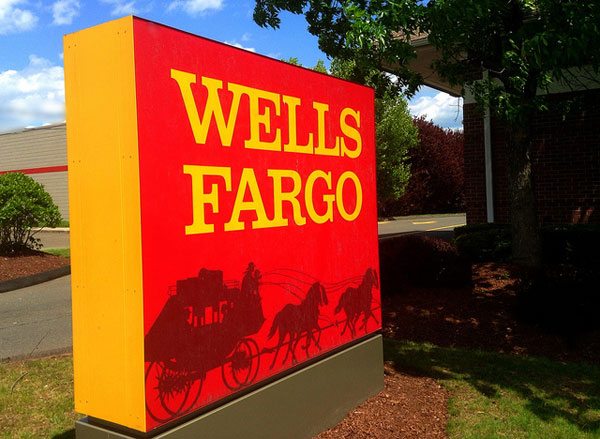
February 2, 2018; New York Times and the Washington Post
Last Friday, in an unprecedented action, the Federal Reserve issued an order barring Wells Fargo from future growth until the banking regulator approves a remediation plan, most likely to occur in the fourth quarter of 2018.
“Until the firm makes sufficient improvements, it will be restricted from growing any larger than its total asset size as of the end of 2017,” the Fed said. The New York Times adds that, “the Fed and Wells said the bank would replace four members of its 16-member board, although the changes were not mandated under the so-called consent order.”
“I don’t remember the last time the [Fed] has ever done anything quite as dramatic as that,” said Evan Stewart, a regulatory lawyer at Cohen and Gresser. “It’s really quite a dramatic intervention by the major federal regulatory agency in the governance of a major bank.”
Here at Nonprofit Quarterly, we are not shy about covering scandals in our own sector, but of course nonprofits hardly have a monopoly on scandal. The details of the Wells Fargo scandal first became public when the Los Angeles Times published an exposé in the fall of 2013. But, like peels of an onion, the Wells Fargo scandal has unraveled, layer by layer, over time.
The crux involved the opening of millions of sham accounts. Managers were given unreachable new account targets; staff were pushed and incentivized by bonuses to meet those targets by any means necessary—including opening accounts without any customer approval whatsoever. Both board and management oversight were lax, allowing the fraudulent practices to become embedded in company culture over time. As of 2016, Wells Fargo estimated that 1.5 million false accounts had been opened. Wells has since upped that estimate to 3.5 million.
Last April, the New York Times catalogued many of Wells Fargo’s offenses. In addition to the sham accounts, Wells was rocked by other scandals, including mistakenly releasing thousands of documents of private customer financial information and, in a twist of the larger sham account scandal, a story about what former workers called “lions hunting zebras,” wherein “the bank targeted immigrants who spoke little English and older adults with memory problems.”
Sign up for our free newsletters
Subscribe to NPQ's newsletters to have our top stories delivered directly to your inbox.
By signing up, you agree to our privacy policy and terms of use, and to receive messages from NPQ and our partners.
Typically, corporations that violate the law pay fines and are otherwise left untouched. Indeed, as the rolling Wells Fargo scandal was emerging, in September 2016, Wells agreed to pay a $185 million settlement ($100 million of which went to the Consumer Financial Protection Bureau) without admitting guilt for falsely opening 1.5 million accounts. That may sound impressive, until you do the math and realize that $185 million is less than one one-hundredth of one percent of the bank’s total assets. Robert Hockett, a Cornell Law School professor, noted that effectively the $185 million was equivalent to a “couple of parking tickets” per false account opened.
The Fed’s action last Friday will cost Wells a lot more than $185 million. The Fed’s action “marks the first time that the Federal Reserve has placed limits on a bank’s assets.” For the time being, Wells Fargo, the nation’s third-largest bank, with an estimated $1.95 trillion in assets, cannot grow beyond that level. It’s effectively been forced to cede market share—and therefore lose ground to its competitors—until the Fed deems that the bank has its house in order. As Renae Merle and Heather Long write in the Washington Post, “The San Francisco bank will still be able to take deposits from customers and make loans, but cannot grow bigger through a merger or another major transaction until the Fed is satisfied the bank has sufficiently reformed itself.”
Wells Fargo has said that it will comply with the Fed’s order, which includes submitting a plan within 60 days for improving its board oversight and risk management practices and having an independent third-party review completed by the end of September. After those two steps are completed, the bank will be eligible to have the Fed restrictions lifted.
Meanwhile, for those who are not bankers, there are still management lessons to be learned. Indeed, the “Wells Fargo case” is sure to become a staple of management courses. Last summer, Broadfield Insight identified three lessons: 1) align performance targets with what is achievable and supported; 2) seek out bad news; and 3) don’t assume that bad actions are isolated.
Susan Ochs, writing in Harvard Business Review, noted that when testifying to Congress, former Wells Fargo CEO John Stumpf “kept repeating that the firings [for fraudulent sales] totaled only one percent of headcount per year, and that only 1.9 percent of deposit accounts could be fraudulent…trying to rationalize this as the work of rogue bad actors and a predictable part of doing business, as opposed to a systemic failure.”
Ochs elaborates, “Following the 2008 crisis, regulators have prioritized a healthy banking culture, anchored by ‘effective challenge,’ meaning when people question ideas or escalate problems, they are heard and welcomed, without fear of reprisal. In a large organization, successful risk management requires all hands on deck. Employees should feel not only comfortable but also accountable for speaking up.”
The cost of treating systemic problems as isolated incidents at Wells is now obvious. Even so, Wells could have fared worse. “The bank is lucky it is too big to shut down,” said Erik Gordon, a professor at the University of Michigan’s Ross School of Business. “A smaller bank might have lost its banking licenses.”—Steve Dubb












